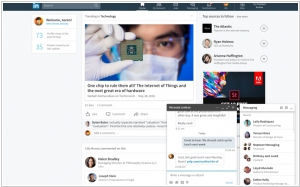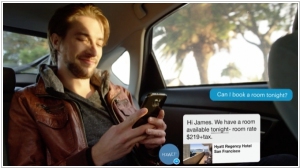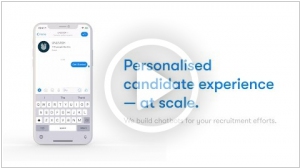Recruiting chatbots
Updated: July 31, 2023
Recruiting chatbots are AI-powered conversational agents designed to streamline and enhance the recruitment process for both candidates and recruiters. These chatbots can interact with candidates through various channels, such as company websites, social media, or messaging apps, to answer questions, collect candidate information, and schedule interviews. They utilize natural language processing (NLP) to understand and respond to candidate inquiries in a human-like manner, providing a seamless and personalized candidate experience. Recruiting chatbots can also assist recruiters by automating repetitive tasks, such as screening resumes, pre-screening candidates, and sending personalized follow-up messages. By leveraging recruiting chatbots, organizations can speed up the hiring process, improve candidate engagement, and efficiently manage a large volume of applications, leading to a more efficient and effective recruitment process.
See also: Top 10 Recruiting software
See also: Top 10 Recruiting software
2019. Jobpal raised $2.7M for its enterprise recruiting chatbot
Berlin-based startup Jobpal, specializing in recruitment chatbots, has successfully concluded a seed funding round of €2.5 million. The company has developed a versatile chatbot that operates across multiple platforms, automating candidate support and streamlining the hiring process. Leveraging machine learning and natural language processing, Jobpal refers to this as "talent interaction." Jobpal primarily targets large enterprises, offering the chatbot as a managed service. The main value proposition for these employers lies in improved efficiency through prompt and proactive engagement with potential job applicants. The always-on chatbot is equipped to promptly respond to common inquiries, enabling employers to swiftly interact and provide information to interested candidates.
2017. LinkedIn launched new desktop version with chatbots

LinkedIn has unveiled a redesigned desktop site featuring a simplified, app-like appearance, an updated messaging experience in the form of a homepage pop-up, and enhanced search functionalities. The rollout of the new desktop version will take place globally over the next few weeks. The revamped interface aims to reduce clutter and provide a more streamlined user experience by condensing navigation into seven main areas: Home (Your Feed), Messaging, Jobs, Notifications, Me (your previous profile page), My Network, and Search. Additionally, LinkedIn has introduced its own chatbot feature, serving as helpful assistants that suggest conversation starters to break the ice with other users. These chatbots also recommend individuals to engage with at specific companies, even before initiating a conversation.
2016. Facebook Messenger allowes to build chatbots

Facebook Messenger is introducing a new feature that enables businesses to provide automated customer support, e-commerce guidance, content, and interactive experiences through chatbots such as Kik, Line, and Telegram, which have their own bot platforms. According to Zuckerberg, by utilizing AI and natural language processing in conjunction with human assistance, individuals will be able to converse with Messenger bots in a similar manner to how they talk to their friends. The Messenger Platform's Send/Receive API allows bots to deliver structured messages containing text, images, links, and call-to-action buttons. This functionality enables users to perform various tasks such as making restaurant reservations, reviewing e-commerce orders, and more. Users can also swipe through product carousels and navigate to external websites to complete purchases. Additionally, a persistent search bar positioned at the top of Messenger assists users in discovering bots.


